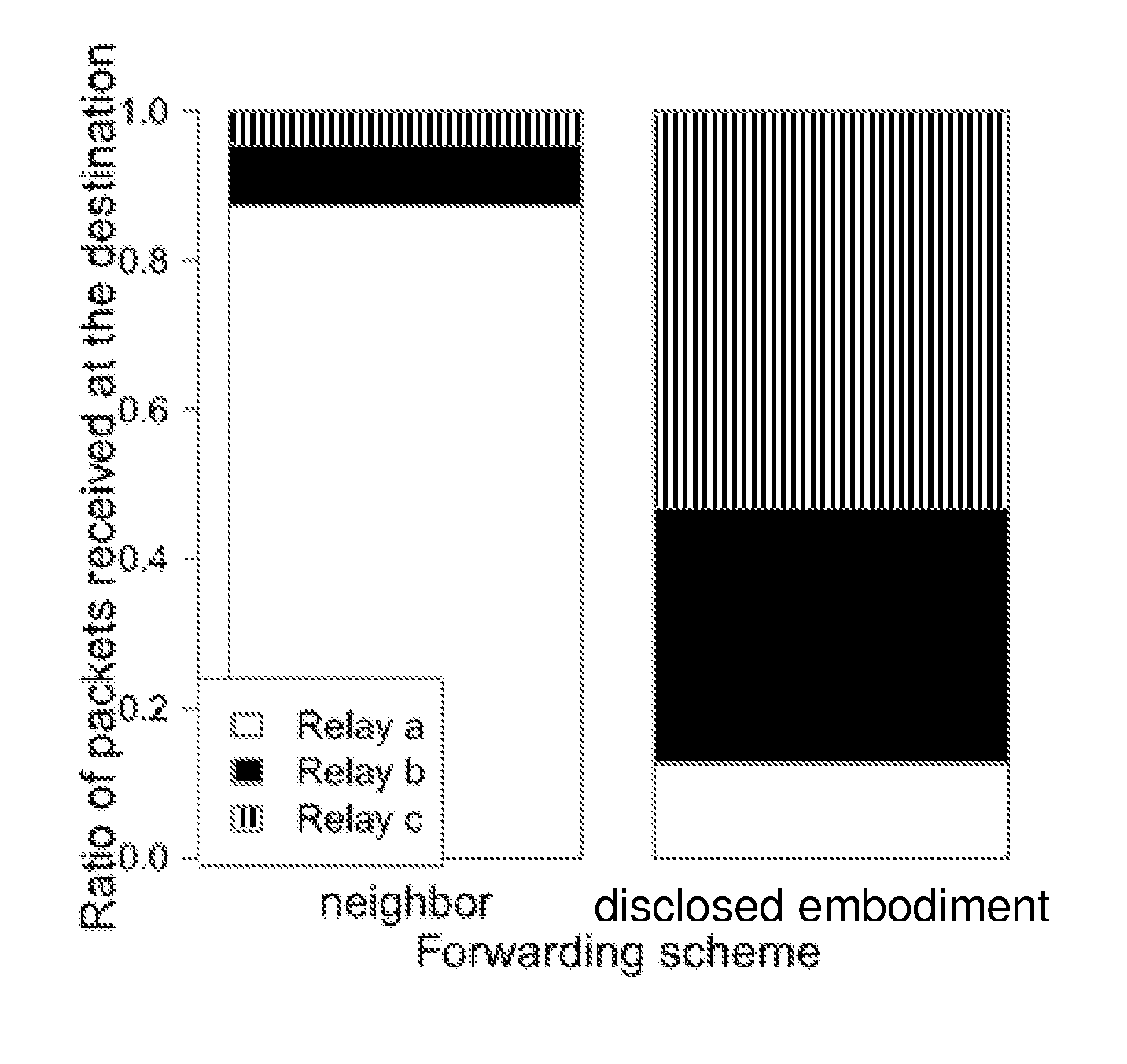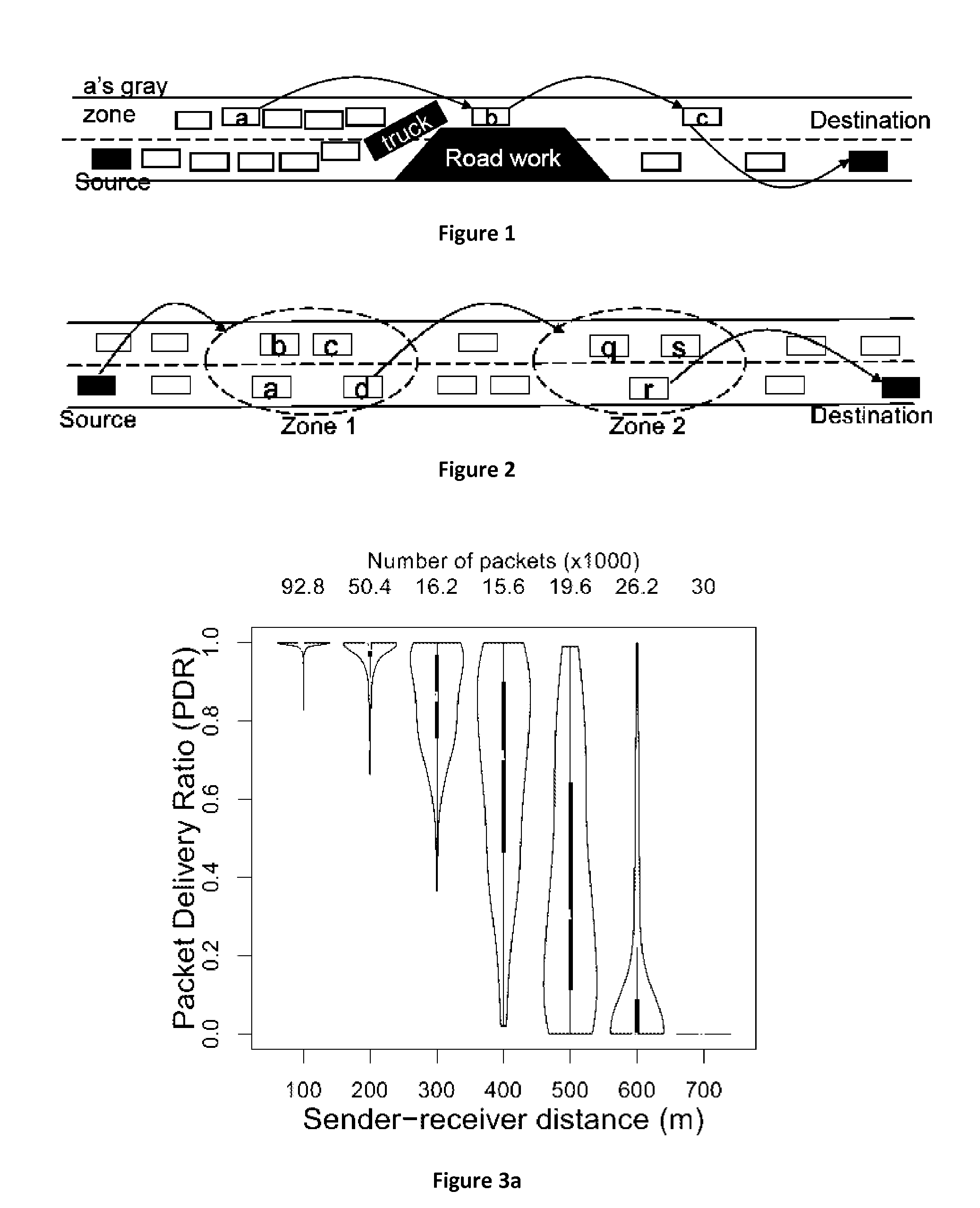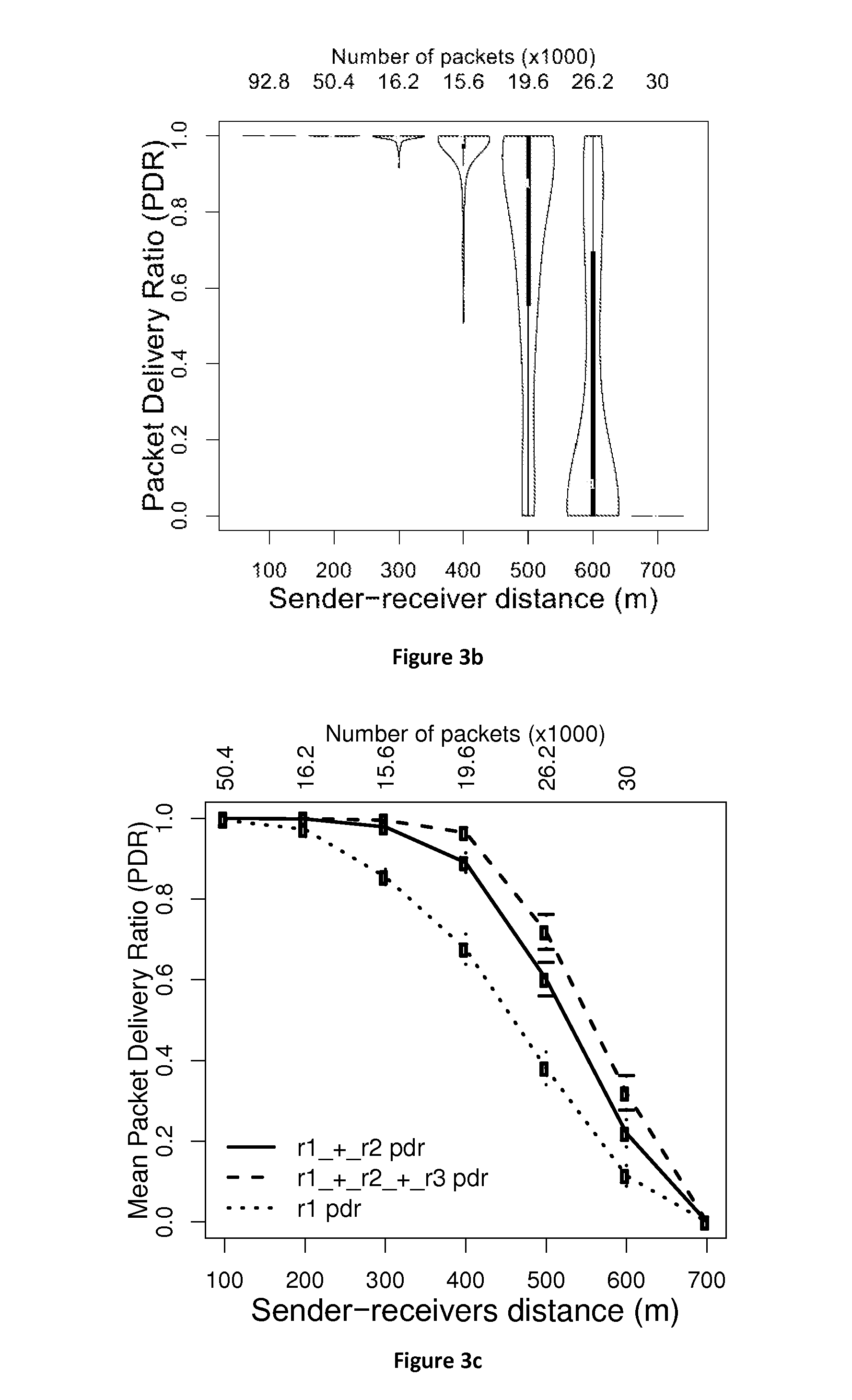Density-aware zone-based packet forwarding in vehicular networks
a density-aware zone and vehicular network technology, applied in the direction of data switching networks, instruments, broadcasting with distribution, etc., can solve the problems of difficult multi-hop packet forwarding in vanets, difficult to design an algorithm suitable for vehicular use, and efficient multi-hop communication, so as to reduce contention, maximize hop length, and high throughput
- Summary
- Abstract
- Description
- Claims
- Application Information
AI Technical Summary
Benefits of technology
Problems solved by technology
Method used
Image
Examples
Embodiment Construction
Link Instability
[0083]Traditional routing schemes build on the premise that nodes have a fixed or slowly changing set of neighbors and that neighbors are well connected to each other. However, measurements have shown that these assumptions do not hold for VANETs, where topology changes quickly and links are often poor. The reasons for this instability stem from the combination of a rich scattering domain with high mobility. Depending on location, roads can be lined with trees, buildings and mounds that scatter the signal and create multipath effects that change quickly with even small movements, resulting in large fluctuations in link quality. Node movement also leads to changes in shadowing conditions. For example, when a vehicle turns the corner of a building, its signal is immediately attenuated [2]. Moreover, even when nodes are stationary, changes in line of sight conditions can affect communication. For example, in FIG. 1, a tall truck is about to come in between nodes a and b...
PUM
 Login to View More
Login to View More Abstract
Description
Claims
Application Information
 Login to View More
Login to View More - R&D
- Intellectual Property
- Life Sciences
- Materials
- Tech Scout
- Unparalleled Data Quality
- Higher Quality Content
- 60% Fewer Hallucinations
Browse by: Latest US Patents, China's latest patents, Technical Efficacy Thesaurus, Application Domain, Technology Topic, Popular Technical Reports.
© 2025 PatSnap. All rights reserved.Legal|Privacy policy|Modern Slavery Act Transparency Statement|Sitemap|About US| Contact US: help@patsnap.com



